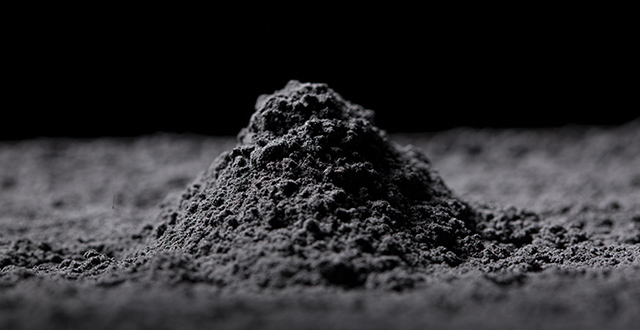Amphotericin B Market Trends in Q2 2025: Regional Price Shifts in North America, China, and Germany
The global Amphotericin B market experienced significant volatility during the second quarter of 2025, shaped by a complex interplay of trade dynamics, supply chain realignments, and shifting demand fundamentals. This antifungal agent—widely used in the treatment of systemic fungal infections—remains a critical active pharmaceutical ingredient (API) within the healthcare sector.
Across key regions such as North America, China, and Germany, the pricing trends for Amphotericin B demonstrated divergent trajectories, reflecting the regionalized nature of pharmaceutical trade and policy. While the United States grappled with tariff uncertainties and excess inventories, China witnessed a prolonged price dip followed by a modest recovery, and Germany endured a supply glut as redirected shipments flooded its domestic market.
This article delves into the regional market dynamics of Amphotericin B, highlights the drivers behind price movements, and explores the potential outlook for the remainder of 2025.
Track - Real Time Chemical Price:- https://www.chemanalyst.com/Pricing-data/amphotericin-b-1447
North America: A Market Under Tariff Pressure
U.S. Price Trends in Q2 2025
In April 2025, the Price Index of Amphotericin B in the United States dropped by 6.66%, marking one of the steepest single-month declines in recent quarters. This price slump was triggered by a combination of three interlinked factors:
- Frontloaded Imports: Anticipating higher tariffs and tighter customs inspections, U.S. importers accelerated shipments of Amphotericin B in late Q1. This surge in arrivals in April overwhelmed domestic demand, creating downward pressure on spot and contract prices.
- Tariff Uncertainty: The Biden administration’s evolving tariff policies on pharmaceutical imports created market ambiguity. Distributors and manufacturers hesitated to place fresh orders, preferring to rely on accumulated stockpiles until regulatory clarity emerged.
- Supplier Inventories: The simultaneous build-up of inventories at both distributor and wholesaler levels further amplified the supply-demand imbalance. Excess inventory discouraged new procurement, pushing suppliers into aggressive price discounting to liquidate stock.
Demand Conditions
While the demand for Amphotericin B from hospitals and healthcare facilities remained steady, it was not sufficient to absorb the frontloaded supply. Moreover, seasonal demand fluctuations—particularly a lower incidence of systemic fungal infections during the spring months—reduced market urgency, further weighing on price momentum.
Strategic Market Implications
For U.S. buyers, the April decline provided temporary relief from elevated costs that had characterized late 2024. However, the sustainability of lower prices remains uncertain, as future tariff decisions and restocking cycles could rapidly shift dynamics.
Monitor Live Chemical Price:- https://www.chemanalyst.com/Pricing-data/amphotericin-b-1447
China: Consistent Decline Before Marginal Recovery
Price Movements Across April–June 2025
China’s Amphotericin B market followed a different trajectory than North America. The Price Index experienced consecutive declines in April and May, before witnessing a modest uptick in June. Spot price movements were as follows:
- April 2025: USD 645,000/MT
- May 2025: USD 643,000/MT
- June 2025: USD 644,200/MT
This data highlights a cumulative two-month dip of USD 2,000/MT, followed by a slight rebound of USD 1,200/MT in June.
Factors Driving the Downtrend
Several key factors explain this downward trajectory:
- Export Market Weakness: With U.S. import demand slowing due to tariff complications, Chinese suppliers faced fewer outbound orders. This diminished external demand placed excess supply back into the domestic market.
- Domestic Production Ramps: Several large-scale Chinese manufacturers expanded Amphotericin B production capacity in early 2025, creating a temporary surplus that exceeded local consumption needs.
- Cost Rationalization: Declining raw material and energy costs in April and May lowered production costs, allowing suppliers to offer competitive pricing even in an oversupplied environment.
Signs of Recovery in June
By June, modest price stabilization occurred, supported by two developments:
- Inventory Adjustments – Producers reduced output in response to falling margins, gradually tightening available supply.
- Improved Regional Demand – Southeast Asian buyers resumed orders after benefiting from favorable trade deals with China, offering incremental export relief.
Outlook for China
While June’s rebound signaled a bottoming out of the market, sustained upward momentum will depend on whether Chinese suppliers can strike a balance between capacity and demand. Export recovery, particularly to non-U.S. markets, will play a pivotal role in setting Q3 trends.
Germany: Market Saturation from Diverted U.S. Shipments
Sharp Price Decline in April 2025
The Amphotericin B Price Index in Germany plunged by 6.66% in April 2025, mirroring the U.S. decline in magnitude but arising from very different circumstances. Unlike the U.S., where domestic policies triggered disruptions, Germany’s price slump was caused by a sudden influx of diverted shipments.
When U.S. tariffs restricted import flows, many cargoes originally destined for American ports were rerouted to European hubs. Germany, with its advanced pharmaceutical distribution networks, became a natural landing point for these shipments.
Consequences of Oversupply
The redirection of supply created a market glut across German warehouses and distribution channels:
- Excess Inventories: German wholesalers were forced to absorb higher-than-expected volumes, creating pressure to clear stock rapidly.
- Price Wars: Competition intensified as distributors undercut one another to liquidate inventory, driving spot prices downward.
- Strained Margins: Manufacturers supplying into Germany faced shrinking profit margins, with buyers capitalizing on surplus-driven price leverage.
Limited Demand Absorption
Germany’s domestic healthcare demand for Amphotericin B remained stable but limited, insufficient to absorb the wave of redirected inventory. Hospitals and clinics, already operating with predictable procurement cycles, did not ramp up orders despite lower prices.
Implications for European Trade
Germany’s oversupply not only depressed domestic prices but also influenced broader European Union trade flows, as surplus stock was resold into neighboring markets such as France, Italy, and the Netherlands at discounted rates.
Comparative Analysis: Divergent Regional Drivers
A closer look at the three regions underscores the highly region-specific factors shaping Amphotericin B prices:
- North America: Prices fell due to frontloaded imports, tariff ambiguity, and inventory saturation.
- China: Prices declined due to weaker exports and production surpluses, followed by slight stabilization as output was adjusted.
- Germany: Prices slumped because of rerouted shipments, creating a sudden oversupply shock.
This comparative lens highlights that while price movements were broadly downward in April, the root causes varied—ranging from policy-driven disruptions (U.S.) to supply-demand mismatches (China) and logistical redirection shocks (Germany).
Broader Market Implications
Global Trade Fragmentation
The Amphotericin B market in Q2 2025 revealed the vulnerabilities of a globalized yet fragmented supply chain. Tariff policies in one region reverberated across continents, causing distortions in trade flows and pricing.
Inventory Management as a Competitive Lever
Suppliers and distributors who managed inventories strategically emerged more resilient during this period. Companies with leaner stockpiles avoided the steepest losses from April’s oversupply, while those with aggressive pre-import strategies faced margin erosion.
Pressure on Manufacturers
For producers, shrinking price indices raised concerns over profitability and sustainability. Amphotericin B, being a complex molecule with high production costs, requires steady margins to justify manufacturing investments. Extended periods of depressed pricing could discourage future capacity expansions.
Outlook for Q3 and Beyond
Looking ahead, several factors will determine the trajectory of Amphotericin B prices:
- U.S. Tariff Decisions: A resolution on trade policy could either restore normal import demand or perpetuate uncertainty.
- Chinese Export Diversification: Expansion into non-U.S. markets will dictate how effectively China balances its production surplus.
- European Market Absorption: Germany and broader EU markets must clear existing oversupply before prices can normalize.
- Global Healthcare Demand: Any resurgence in systemic fungal infection cases or increased prophylactic usage could strengthen demand and stabilize prices.
While the immediate outlook remains cautious, a gradual rebalancing is expected in the latter half of 2025 as inventories normalize and trade flows adjust.
Conclusion
The second quarter of 2025 was marked by price declines across the global Amphotericin B market, though each region experienced its downturn for distinct reasons. The U.S. faced policy-driven uncertainty and excess inventories, China managed an export-driven slump before stabilizing, and Germany endured the consequences of redirected shipments flooding its domestic market.
For stakeholders—from pharmaceutical manufacturers to distributors and healthcare providers—this period underscored the importance of adaptive strategies in procurement, inventory management, and trade navigation. As the global healthcare sector continues to rely heavily on Amphotericin B, the lessons of Q2 2025 will serve as a critical reference point in anticipating and managing future market disruptions.




Comments
Post a Comment